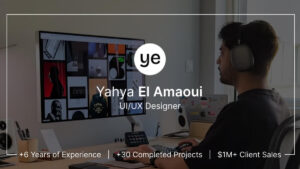Pricing design projects has always been one of the trickiest part of the job. It took me a while to get comfortable talking about money. Not because I didn’t know my value, but because I wanted clients to feel the value too.
So I wanted to share how I approach pricing, what factors go into my estimates, and why I believe transparency is key, not just for my clients, but for my own sanity as well.
I Don’t Charge for “Time” I Charge for Value
I stopped selling hours a long time ago.
Why? Because clients don’t really care how many hours something takes—they care about the result. Whether it’s a landing page that converts better, a cleaner UX that improves engagement, or a new brand identity that finally feels right—they’re buying the outcome, not the clock.
So I price based on:
- The scope of the project
- The impact it will have on the client’s business
- The complexity of the work involved
- And, yes, my experience and expertise
This allows me to focus on doing great work without watching the clock—and gives clients a clear, upfront cost with no surprises.
Every Project Gets a Custom Quote (But I Have a Base Range)
I don’t believe in one-size-fits all pricing, but I also don’t like being mysterious. So over time, I developed base price ranges for different types of projects, I build quotes based on a mix of:
- Scope of work (pages, features, integrations, etc.)
- Client goals (and how design contributes to them)
- Timeline and urgency
- Level of involvement on my end (strategy, content, dev)
I do have base price ranges for things like landing pages, full websites, or UI/UX design. But every proposal is tailored to the real needs of the project. If there are optional add-ons, I make that clear and break down the pricing, so the client can decide. Check out my template for project proposals that I’ve been using.
I Break My Prices Into Milestones
This is something clients have really appreciated: I almost always split the total cost into phased payments, for example:
- 50% to kick off the project
- 25% after the first big milestone (like final design approval)
- 25% upon delivery or launch
This helps with cash flow on both sides, and it creates a shared rhythm that keeps everyone aligned.
It also builds trust. Clients can see the progress, give feedback, and feel confident knowing they’re paying as the work gets done.
I’m Transparent About What’s Included (and What’s Not)
If there’s one lesson I’ve learned the hard way, it’s this: clarity upfront saves relationships later.
Now, I always include a detailed scope in my proposals that outlines:
- What’s included (deliverables, rounds of revision, tech stack)
- What’s not included (like copywriting, stock photos, hosting, etc.)
- What counts as “extra” work and how it would be billed if needed
I want clients to feel informed and not blindsided. The more transparent I am at the start, the smoother the collaboration goes.
I’m Not the Cheapest—And That’s Intentional
There are plenty of cheaper options out there, and I’m totally okay with that. I’m not trying to compete on price, I’m here to deliver value, backed by experience, thoughtfulness, and attention to detail.
Clients who choose to work with me aren’t just paying for “a website” or “a design”, they’re investing in someone who will guide them, ask the right questions, and care as much as they do about the outcome.
And that makes a difference.
Transparency Builds Trust
Pricing can feel awkward to talk about, but I’ve found that being honest and clear upfront saves a ton of stress down the road. It also sets the tone for the kind of working relationship I want to have: open, respectful, and rooted in mutual trust.
If you’re a client reading this: ask questions. If something isn’t clear, bring it up. I’d much rather have a conversation early on.
And if you’re a designer trying to figure out your own pricing: don’t be afraid to charge for the value you bring. Know your worth, and back it up with clarity and communication.


